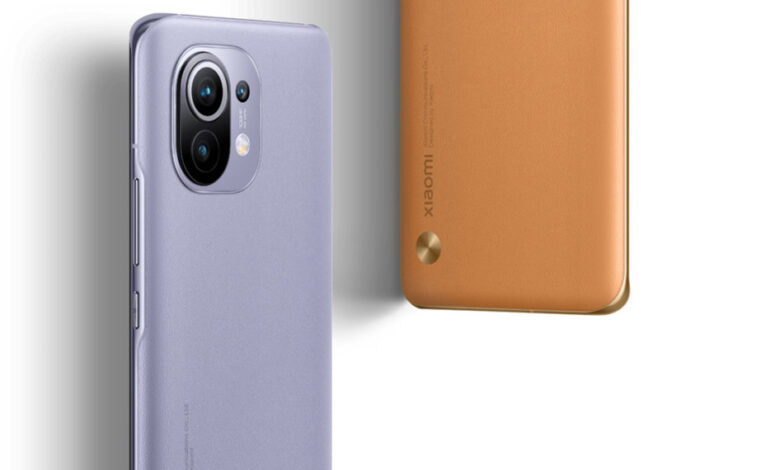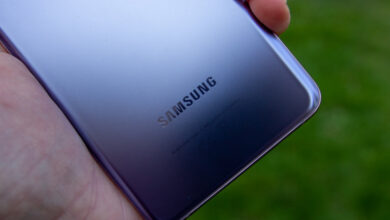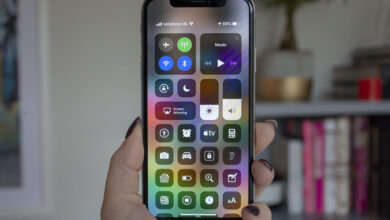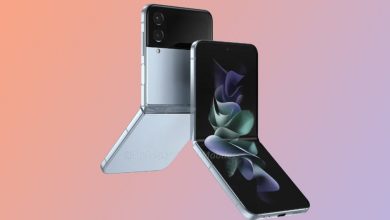Spec, price, release date, full details

[ad_1]
(Pocket-lint) – Xiaomi’s 2021 top-end flagship, the Mi 11, arrived earlier than is typical – following a China announcement on 28 December 2020 – to become the world’s first device to feature the Qualcomm Snapdragon 888.
The Mi 11 will expand into wider territories following its global launch event on 8 February – here’s when and how to watch – so should you be excited about this new flagship? Here’s everything to know about the handset.
Xiaomi Mi 11: Price & Release Date
- Starting from RMB 3999 (£450/€500/$610)
- 28 December 2020 China launch event
- 8 February global launch event
While the Mi 11’s launch event took place on 28 December 2020, with pre-orders opening on that date, the phone didn’t ship immediately. The bigger excitement, from our point of view, is the 8 February global launch event – with the handset expected to arrive for sale shortly after.
The Mi 11 comes in three variants: the 8GB RAM and 128GB storage option is priced at RMB 3999 (£450/€500/$610 by conversion); the 8GB+256GB is RMB 4299 (£485/€540/$660); while the top-tier 12GB+256GB is RMB 4699 (£530/€590/$720).
Of course those price conversions will differ in their native markets upon release. So while the Mi 11 appears to be more affordable than its Mi 10 predecessor, the reality will likely differ – as there’s no way those direct conversion prices will hold up in GBP or Euro proper.
Xiaomi Mi 11: Design & Display
- 6.81-inch AMOLED quad-curved ‘DotDisplay’ panel
- 2560 x 1440 resolution (WQHD+)
- 900 nits brightness
- 120Hz refresh rate
- 20:9 aspect ratio
- Finishes (frosted glass): Midnight Gray / Horizon Blue / Frost White
- Finishes (vegan leather): Lilac Purple / Honey Beige
- Dimensions: 164.3 x 74.6 x 8.06mm / Weight: 196g
- Dual speakers, sound by Harman Kardon
- Under display fingerprint scanner
It’s typical for Xiaomi to launch multiple Mi handsets in a series at once, but that’s not the case with the Mi 11. Not yet anyway. There are rumours surrounding a Mi 11 Pro and a Mi 11 Ultra – but nothing concrete yet.
The Mi 11 features a large 6.8-inch AMOLED screen, with a punch-hole selfie camera – it’s not an under-display solution as had been rumoured for some time. The screen features all the mod cons of a 2021 flagship: a 120Hz refresh rate and 20:9 aspect ratio leading the pack.
In terms of finish there are two Mi 11 options: frosted glass or vegan leather. The glass option is as thin as flagship phones go, measuring 8.06mm; the leather option adds just a touch extra, measuring 8.56mm, rather than being a far chunkier choice. How a leather covering will work regarding heat dissipation is certainly a question that needs some thought – especially with top-tier Qualcomm hardware under the hood.
Xiaomi Mi 11: Hardware & Specification
- Qualcomm Snapdragon 888 processor (5G), 8GB/12GB RAM options
- Up to 256GB storage (no microSD expansion)
- 4,600mAh battery capacity
- 55W wired fast-charging
- 50W wireless charging
- 10W reverse charging
- Software: Mi UI 12.5
Which brings us to the hardware side of things. Xiaomi confirmed early on that the Mi 11 would feature the Qualcomm Snapdragon 888 platform, making it the first flagship phone with such an accolade. The platform’s integrated modem means it’s 5G connected too.
As we’ve highlighted above the standard handset comes with 8GB RAM, but there’s a 12GB RAM option if you want to pay the extra. It’s all super-fast, too, as LPDDR5 at 3200MHz, while storage is UFS 3.1. There’s no microSD card expansion, though, but it is a dual SIM device.
Elsewhere the Mi 11 houses a 4,600mAh battery – which is a large capacity considering the handset’s slim build. That’s paired with 55W fast-charging, so wired to a plug could refill the battery in just 45 minutes. Don’t want to plug in? There’s 50W wireless charging, which is also extra quick. And 10W wireless reverse charging means you can use the phone to wirelessly recharge other devices, such as wire-free earbuds.
On the software front, the Mi 11 features Google’s Android operating system, with Xiaomi’s MIUI 12.5 expected over the top. This software skin is said to bring “upgrades in privacy and security”, while optimisations see lower memory and power usage. We’re yet to see the software in action, but hope it irons out some of the irks in previous MIUI iterations.
Xiaomi Mi 11: Cameras
- Triple rear cameras system:
- Main: 108-megapixel, f/1.85 aperture, 0.8μm pixel size, optical stabilisation (OIS)
- Wide-angle (123 degree field of view): 13MP, f/2.4
- Telemacro: 5MP, f/2.4, autofocus (3-10cm)
- Front-facing selfie camera:
- 20-megapixel, f/2.4 aperture, 0.8μm pixel size
Xiaomi has long been trying to push advances in phone-camera photography, as one of the first companies to utilise a 108-megapixel sensor. There was suggestion that the Mi 11 would ditch this ultra-high resolution sensor, but this was unfounded. By default the camera uses four-in-one processing, meaning 27-megapixel results. There’s also optical image stabilisation to ensure sharpness.
The other two cameras arranged on the Mi 11’s rear unit are a wide-angle and what’s described as a “telemacro” lens. The former is fairly self explanatory, while the latter is something new to phones. Xiaomi describes the telemacro lens as a “50mm”, which is approximately a 2x over the main lens’ focal length, so it’s not a far-reaching zoom like we’ve seen on other phone cameras in recent years.
Ultimately it’s the macro part of this lens’ equation that’s of interest – meaning close-up photography is possible, with autofocus from 3cm to 10cm from the subject. Most other macro lenses on the market have no autofocus, are wide-angle only, and typically even lower resolution than Xiaomi’s offering on the Mi 11. So that’s one feature to make this phone stand out from the crowd.
The front-facing camera is also a larger-than-average sensor, meaning its pixel sites are large for better quality potential, offering a 20-megapixel resolution. As we’ve said it’s in a punch-hole cutout rather than being an under-display camera, but perhaps the Mi 12 will change that up come 2022.
Writing by Mike Lowe.
[ad_2]
Source link






